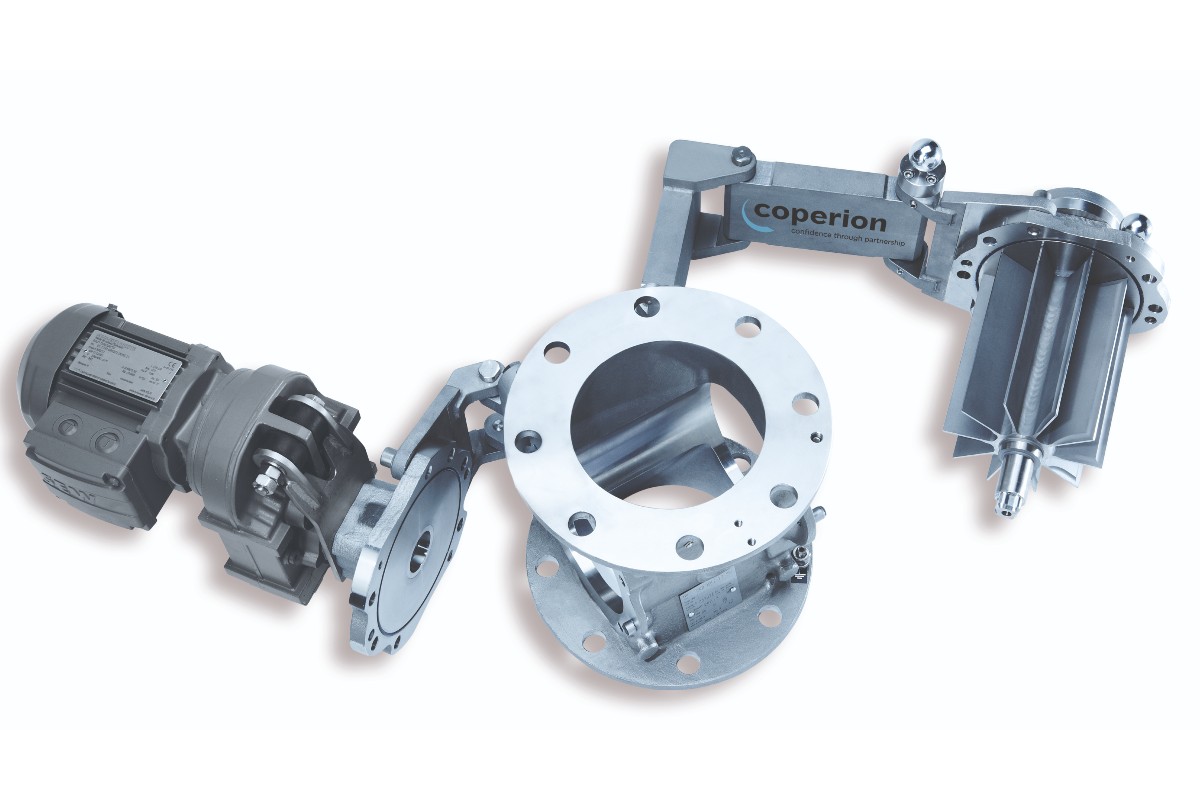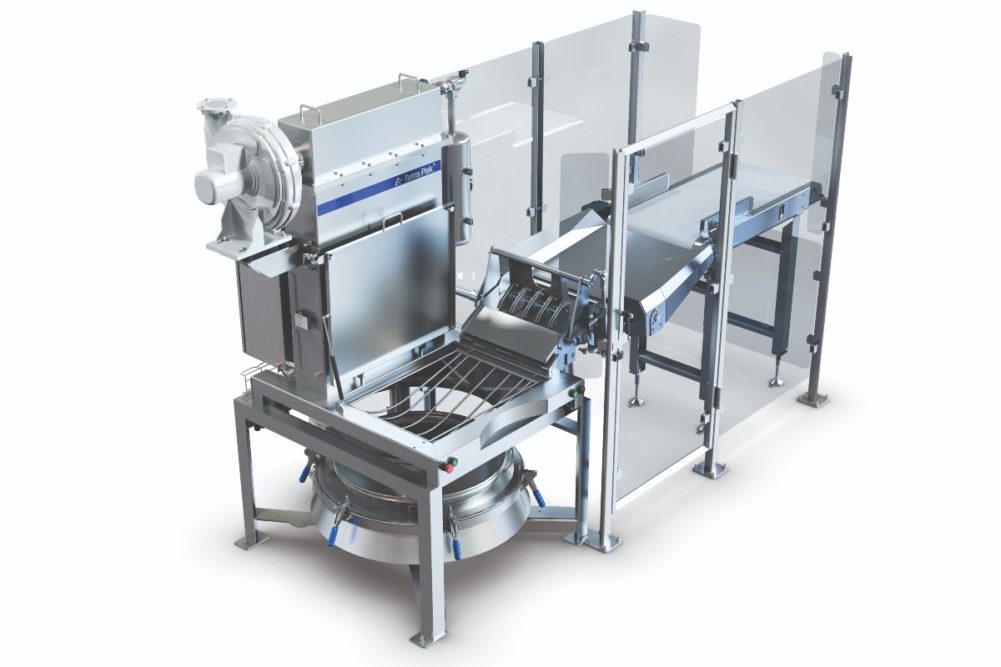With safety, sanitation and the nature of ingredients in mind, innovations in automated equipment are helping dairy foods manufacturers keep their products safe.
“Reducing the involvement of operators on the processing line, whether it is about production, cleaning or maintenance, can have a huge impact on the business,” said Jean-Christophe Margotteau, processing solutions and equipment manager for Tetra Pak US and Canada.
Streamlining
The more operators there are on the floor, the more risk there is for incorrect handling of raw materials, inaccurate dosing, contamination, improper maintenance and insufficient cleaning, according to Margotteau.
He also said the trend of companies producing a larger number of SKUs is creating a need for improved versatility, because producers need to be able to switch easily from one recipe to another as they produce a wider variety of products in smaller volumes.
In terms of processing powder ingredients, all these factors mean there needs to be increased attention placed on how to clean a dry dairy ingredient handling line, how to minimize the emission of dust in the air, reduce product losses, improve ergonomics and operator safety, secure hygiene and improve working conditions, Margotteau said.
Tetra Pak has introduced a unit that allows for automatic bag tilting and slitting operations. It decreases the contact between operators and ingredients. The company has also introduced a system to automatically clean a powder mixer or bin without using water or chemicals.
Handling non-free flowing and cohesive powders like lactose and maltodextrin requires care, and the equipment and systems designed to carry out these tasks must include options to facilitate material flow, ensuring optimal performance and efficiency, according to Sharon Nowak, Coperion’s global business development manager for the food and pharmaceutical industries.
Such materials are often best handled by a twin screw feeder with hopper agitation, and to that end Nowak said the company offers the Coperion K-Tron ActiFlow system as a material flow aid that prevents bridging or rat-holing of cohesive bulk materials in hoppers. The non-product contact device eliminates the need for mechanical agitators with secondary motors and gearboxes, as well as the need for flexible side wall agitation devices and aeration pads, according to Nowak.
Other sanitation-boosting innovations include an anti-stick surface treatment from Coperion for rotary valves that prevents sticking and glazing of difficult ingredients. As a treatment instead of a coating, it won’t come off, Nowak said.

Sanitary design of material handling conveying systems as well as components like bag dump stations that are specifically designed for handling specialty ingredients such as probiotics also are important, according to Nowak.
Dairy processors can face the possibility of metal wear or contaminants in their products. To this end, the company has a contact monitoring system for rotary valves that registers, evaluates and reports unwanted contact between the rotor and housing to prevent metabolic abrasion.
“Food applications for a variety of powders, especially those with a high number of cleaning cycles such as dairy, infant formulas and nutraceutical formulations, as well as applications which include frequently changing products and recipes, can particularly benefit from this instrumentation,” Nowak said.
As automation continues to play a role in dairy ingredient handling, the use of automated dispensing stations as opposed to manual batch weighing can improve product and process safety, Nowak said. Added instrumentation for handling components can also improve feeder efficiency, she said.
Advancements in conveyors
According to the team at Winneconne, Wis.-based Multi-Conveyor, director of marketing Cheryl Miller said, one of the biggest considerations for dairy processors is the fact that facilities often operate on a 24-7 schedule. Multi-Conveyor added that inconsistencies resulting from shift changes, contract cleaning services and construction require special attention to maintain sanitary conditions.
“Continuous handling of the raw products can sometimes create unsanitary conditions, especially as product line demands outweigh the need or time required for regular cleaning and maintenance,” Miller said.
Overall advancements in ingredient handling include new conveyor belt designs that allow for the complete disassembly of the conveyor for cleaning, using a “no-tools-required” approach. This saves time with belt cleaning, repair and replacement while alleviating unnecessary tools for increased operator safety, she added.
In addition, belt cleaning and inspection lifts can be used to allow for possible air drying of the belt, Miller said. A more recent development in sanitary designs is the continuous belt including tracking and friction-driven carry slides. These belts often are offered in a turquoise color that contrasts with the standard blue belt. Miller said all these advancements lead to more sanitary processing.
“These days engineers and plant managers need to specify conveyors that adapt to multiple products on one line,” Miller said. “This may include variable line speeds, changeovers, elevation changes, twists, turns, diverts, redirects, indexing, sorting and merging, all while moving in the direction or process required.”
As a result, Multi-Conveyor thinks flighted inclines, declines, elevators and lowering conveyors are becoming more popular.
Overall, dairy products are high-risk from a food safety standpoint, because they are rich in protein and carbohydrates, which can foster the growth of microorganisms, according to Amit M. Kheradia, education and technical support manager for Remco. These ingredients can also be lodged in nooks and crannies on equipment. As a part of a holistic sanitation program, high-quality and durable cleaning and handling tools made of US Food and Drug Administration-compliant materials and hygienically designed equipment are important, Kheradia said.
Plant managers should also take feedback from inspectors as both an opportunity to improve processes as well as an impetus for future innovation, Miller suggested.
“When agency inspectors arrive, management should welcome any reports indicating non-compliance as an incentive for personnel to adhere to the sanitation standard established and immediately comply to correct the issues,” Miller said. “These reports are also instrumental in the design of future equipment to make sure it’s agency compliant from inception.”
Looking ahead
Nowak said future innovations will continue to focus on improvements in the automated handling of ingredients and the transfer of ingredients in a manner that emphasizes cleanability, accessibility and precision accuracy. She said the use of automation in material handling and conveying systems and automated batching of recipes will improve the overall process, minimize manual labor and emphasize social distancing within manufacturing facilities.
Accomplishing all of that in a sustainable manner also will be an industry focus, according to Miller.
“Looking ahead, sustainability in equipment means designing solutions that have a smaller footprint, exceeding production requirements by using technologically advanced components in lesser volume, engineering systems with the fortitude to grow with the expansion of your company for decades and meeting agency compliance for a safer, greener and more ergonomic facility.”

